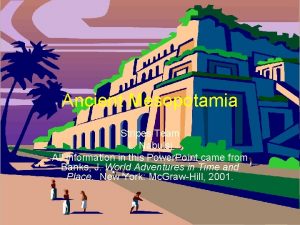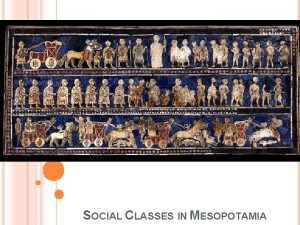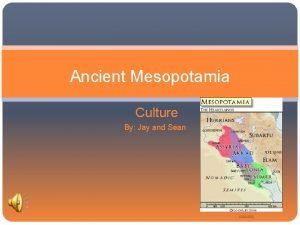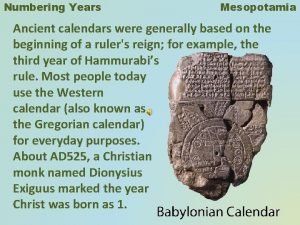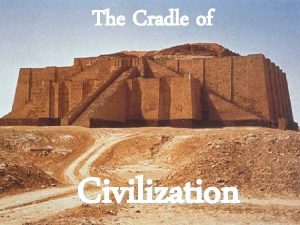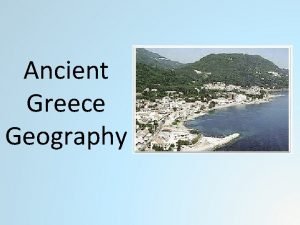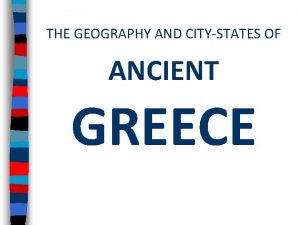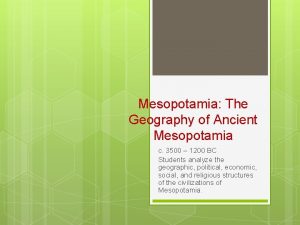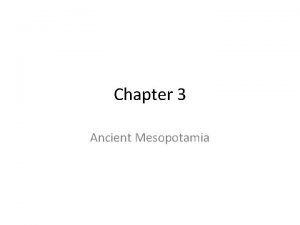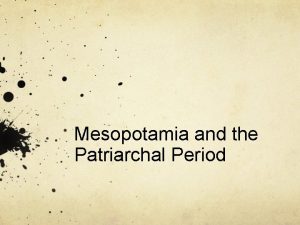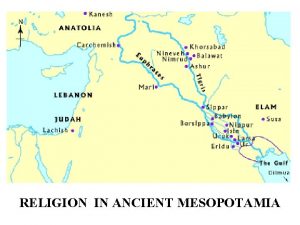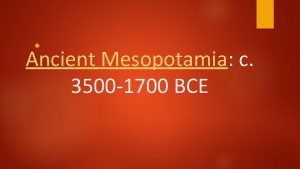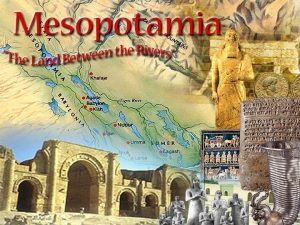Mesopotamia The Geography of Ancient Mesopotamia c 3500










- Slides: 10

Mesopotamia: The Geography of Ancient Mesopotamia c. 3500 – 1200 BC/BCE Students analyze the geographic, political, economic, social, and religious structures of the civilizations of Mesopotamia.

Historical Map of Mesopotamia

Fertile Crescent Identify the Tigris and Euphrates Rivers, and Persian Gulf. Identify Caspian Sea and Black Sea, Dead Sea, and Sea of Galilee.

Vocabulary Mesopotamia floodplain silt arid drought irrigation surplus The Tigris and Euphrates Rivers flooded and the Mesopotamian farmers learned how to irrigate to become successful farmers.

The region of Mesopotamia is known as the “fertile crescent. ” The rivers provided water and a means of travel. *the floods were unpredictable * the source of the rivers was in the mountains of what is today Turkey and Kurdistan. In ancient times, it was easier to travel by boat than to travel on land. There were few roads and boats could carry heavy loads and be moved downstream by river currents.

Farmers learned how to take steps to control the water supply of early Mesopotamia. The silt left from the flooding of the rivers was deposited on the land made the land fertile. In this arid land, the farmers were able to grow a surplus of crops. Irrigation allowed the early people of Mesopotamia to survive and trade for other Items that they needed and wanted. Mesopotamia was a land of few resources. Homes were built out of reeds and dried mud and straw bricks. Mesopotamians had to use their surplus farm products to trade for items they needed and wanted.

Walled Cities Because of few natural barriers, the Mesopotamians were often conquered of attacked by other groups of people. So they built brick walls around their towns and villages. The walls were sometimes as much as 25 feet thick. The walls had guard towers and were often surrounded by an open ditch or a water-filled moat.

Because of their SURPLUS of crops, the Mesopotamians were able to specialize their jobs. Not everyone had to be a farmer! Mesopotamians traded for: • • Gold Ivory Ebony Precious Stones Wood Stone Copper Tin In return they traded: • Grain • Dates • Other farm products

1. • • Explain the importance of: Mesopotamia silt arid Drought 2. The rivers of Mesopotamia were important because…. 3. Mesopotamians watered their crops by …. . 4. Because of the lack of resources….

5. What did the Tigris and Euphrates Rivers provide for ancient Mesopotamians? 6. How did the Mesopotamian farmers obtain the right amount of water for their crops? By building an irrigation system to carry water from the rivers to the fields. 7. How did the lack of natural resources affect Mesopotamians? Through trade, they were able to trade for stone, wood, and metal With their surplus of grain they grew.
